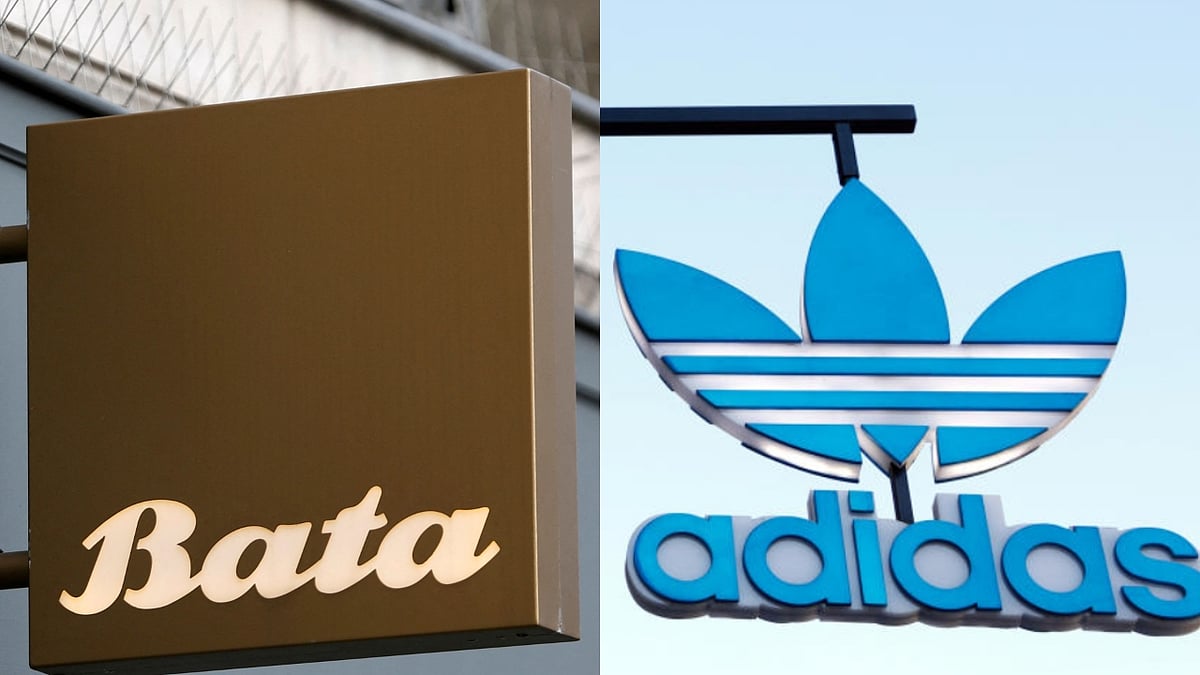Bata in Strategic Partnership Talks with Adidas for India Market 2023

Bata in Strategic Partnership Talks with Adidas for India Market 2023
Adidas of Germany and Bata India, a footwear manufacturer, are negotiating a strategic alliance.
The two giants are reportedly working on the final details of a contract, which will likely be a revenue-sharing arrangement, and the negotiations are at an advanced level. On Thursday, Bata shares, traded on local stock markets, increased 7.3% intraday before finishing at Rs 1,733.75 per share on the BSE, up 5.3% from the day before.
According to industry sources, Adidas could increase its footprint in the nation through the agreement by utilizing the retail network of Bata India.

The German sportswear manufacturer wants to increase sales in India, where it trails market leader Puma.
According to retail specialists, Adidas, which has less than 1,000 franchise-led stores in India, hopes to expand into many more regions by using Bata’s retail network.
According to its most recent annual report, Bata India, the flagship of Bata BN, a company in the Netherlands, has more than 2,050 locations nationwide and carries brands including Hush Puppies and Scholl.
Gunjan Shah, managing director and CEO of Bata India, stated in a recent media interview that the brand was reentering the premium market with new portfolios and price points.
Spending on advertising and promotions would also grow to reach young, tech-savvy consumers.
Bata is also striving for an increase in offline sales, and it anticipates that a significant portion of that growth will come from its development using the franchise model, where it wants to open 125 additional shops in FY24 and strengthen its position at multi-brand retail establishments.

The previous several years have been difficult for Bata, which is best recognized for its low prices and wide selection of footwear for men, women, and kids.
In Q1FY24, net profit decreased by over 10% yearly to Rs 107.8 crore. The operating revenue for the June quarter was Rs 958.1 crore, an increase of about 2% from Q1FY23.
The current quarter’s expenses were higher than the Rs 792.6 crore recorded a year earlier, at Rs 826.9 crore.
Operating margins decreased by 100 basis points from the 26% recorded in Q1 of the previous year to 25% in Q1. One-tenth of a percentage point is referred to as a basis point.
In a move that promises to redefine the Indian footwear market, Bata, the iconic global shoe brand, is reportedly in strategic partnership talks with Adidas, one of the world’s leading sportswear manufacturers.
This collaboration seeks to explore new market opportunities and expand the brands’ footprints in India, one of the fastest-growing markets for footwear and apparel globally.

This article dives deep into this development, examining the motives, potential synergies, challenges, and possible impacts on companies and the Indian market.
Founded in 1894, Bata is a multinational footwear and fashion accessory manufacturer and retailer based in Lausanne, Switzerland.
With a presence in over 70 countries, Bata has been a household name in India for decades, widely respected for its affordable and durable range of footwear.
Adidas, headquartered in Herzogenaurach, Germany, is a leading global sportswear, shoes, and accessories manufacturer. Adidas has made significant inroads into the Indian market, appealing to the burgeoning middle class and young consumers through its premium offerings.
Bata and Adidas have extensive retail networks in India, but their target segments have been markedly different. This partnership could allow Adidas to tap into Bata’s vast and loyal customer base and enable Bata to attract the younger, more affluent demographic that prefers Adidas.
Bata’s strong suit lies in formal and casual footwear. In partnership with Adidas, it can venture into sportswear and athleisure segments where Adidas has proven expertise.
Bata’s extensive manufacturing and distribution networks in India can be a significant boon for Adidas, potentially leading to cost reductions and faster time-to-market for new products.
The collaboration would potentially create a stronger entity capable of competing more aggressively with other significant players in the Indian market, like Puma and Nike.
Combining Bata’s reputation for reliability and value with Adidas’s image as a youthful, premium brand could result in a powerful new brand proposition for the Indian consumer. Bata’s extensive retail presence can provide Adidas with immediate and widespread distribution channels.

Bata’s understanding of local preferences and Adidas’s global design capabilities could lead to innovative, India-specific product lines.
By sharing supply chain resources, the partnership could achieve significant economies of scale, reducing operational costs for both companies.
Bata is perceived as a value-for-money brand in India, while Adidas is positioned as a premium brand. Managing these disparate brand images under a joint partnership could be challenging.
Bata’s roots as a classic, family-focused brand may contrast with Adidas’s sporty, youth-centric image, potentially leading to internal cultural clashes.
Navigating India’s complex regulatory environment for such a partnership may pose significant challenges.
If managed effectively, this strategic partnership could increase market share, improve profitability, and enhance brand equity for both Bata and Adidas.
Indian consumers could benefit from a wider variety of footwear options, potentially at various price points, catering to different market segments.
This partnership could exert significant pressure on other players in the Indian footwear market, forcing them to rethink their strategies to compete with this new formidable alliance.

An Adidas-Bata alliance could lead to increased investments in manufacturing and retail, creating jobs and contributing to economic growth.
The strategic partnership talks between Bata and Adidas represent a landmark potential alliance in the Indian footwear market. If it materializes, this collaboration promises to bring together two giants with complementary strengths.
While the challenges are notable, especially concerning brand integration and cultural alignment, the potential benefits for both companies—and the Indian consumer—are significant.
As talks progress, industry stakeholders and consumers will watch closely to see how this potential partnership shapes the future of footwear in India.




